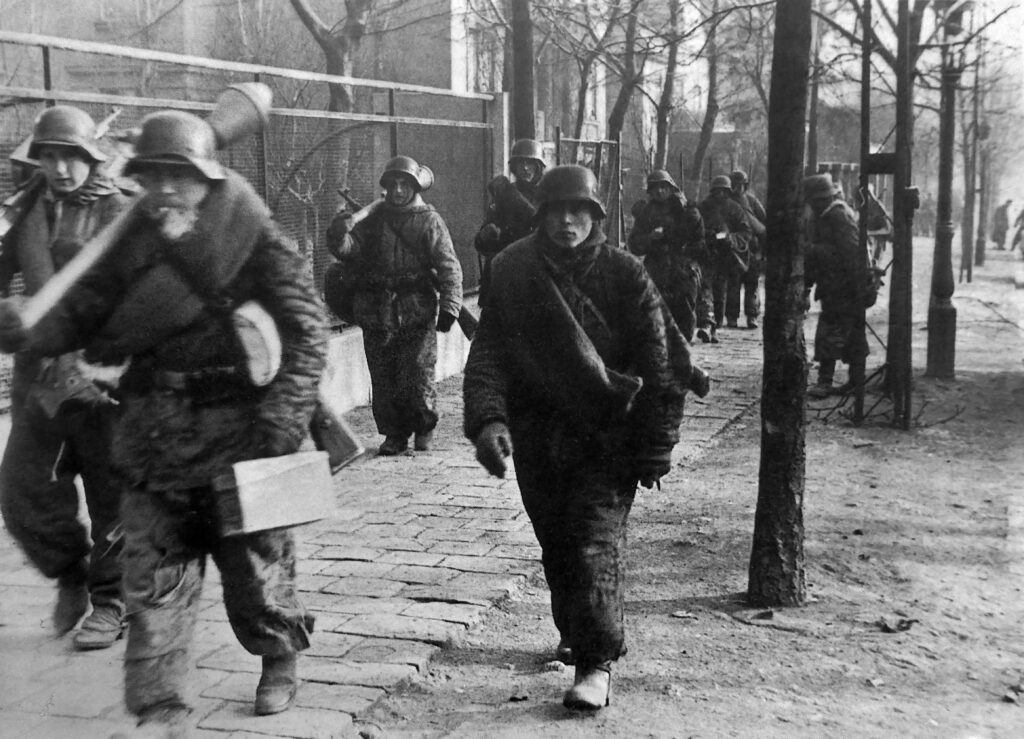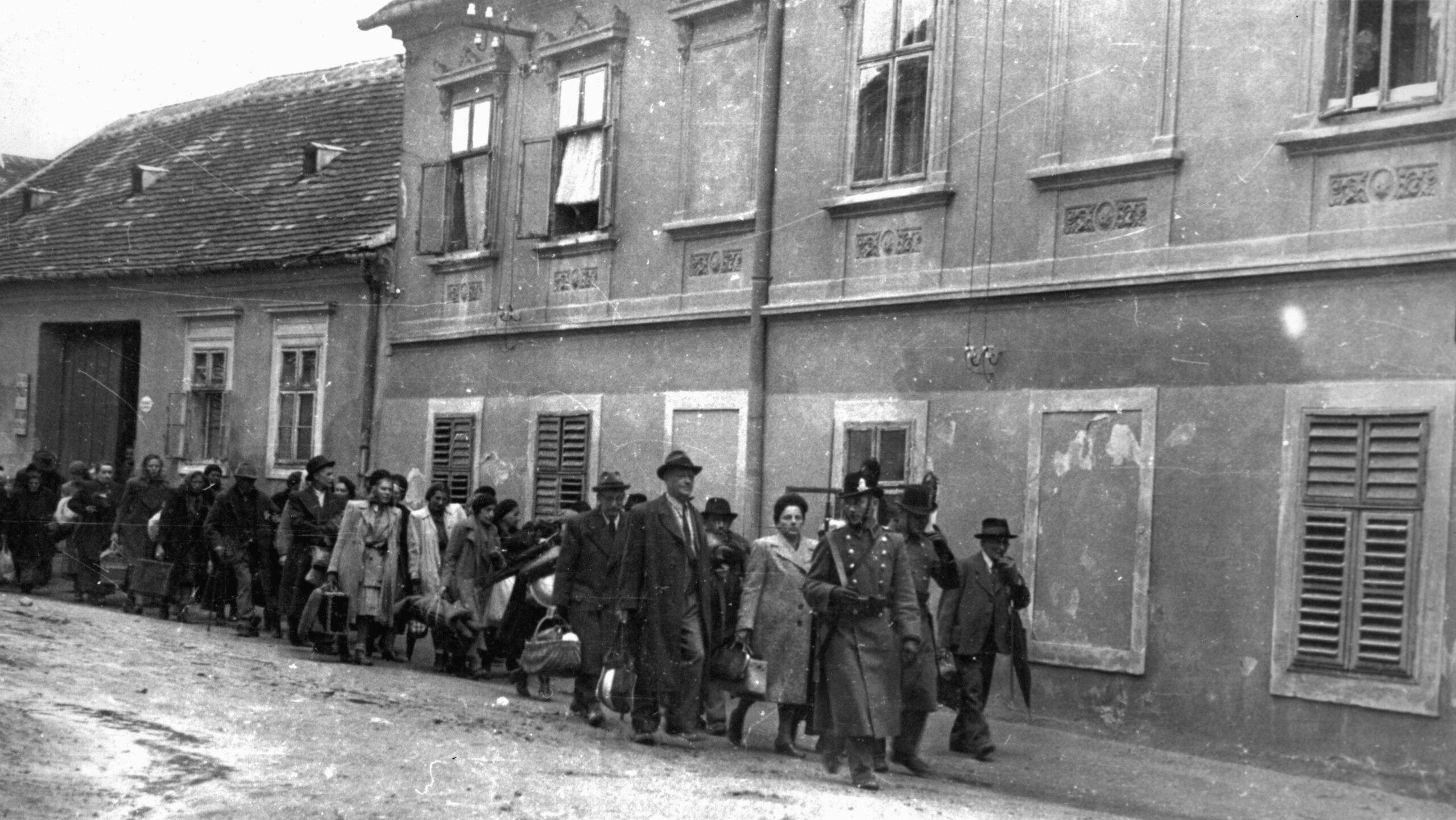‘The ghetto barely noticed it—we had become astonishingly used to the characteristic stench, which arose from the decomposition of corpses, the disgusting latrines, the overflowing sewers, and the sickly-sweet reek of the nearby molasses warehouse. Beyond the fence, however, the city’s nose was more fastidious.’
These lines were written, among others, by Béla Zsolt, Holocaust survivor and writer, about the ghetto of Nagyvárad (today: Oradea, Romania). And it is with this quotation that historian István Végső begins his new book, Gettóélet ‘44 (Life in the Ghetto, ‘44), published by Jaffa Press—a work which, with unprecedented thoroughness, surveys the ghettos, internment camps, and other ‘forced residences’ set up in the territory of historical Hungary during the German occupation of 1944.
The broader public has, of course, always known that there were ghettos—but who actually remembers the exact contents of the ghettoization decree? Or how was it decided where a ghetto would be established? Or what differences existed between the various forced residences? Or that in certain places, the establishment of a ghetto was ultimately refused, and instead the Jewish population was scattered into smaller, ‘marked houses’?
According to medievalist Marc Bloch, the foundation of historiography is comparison—and it’s difficult to talk meaningfully about the Holocaust in Hungary without placing it in an international context, or about the events in different Hungarian localities without comparing them to one another. Végső did not cut corners: in his book, he systematically uses all the major provincial state and church archives, makes extensive use of university manuscript collections, supplements them with both international and domestic scholarly literature, and of course draws on the contemporary press as well, sometimes finding unique and rare sources as well.
It’s thorough work, and from now on, the standard should be set no lower than this when it comes to Hungarian Holocaust history. The tone of the book is objective, even dispassionate at times, which is welcome—because while every historian may have their own biases, and complete objectivity is impossible, one must nevertheless strive for it, just as St Augustine strove for the City of God.
At numerous points, the book synthesizes the findings of recent research, supplements them with the author’s own results, and arrives at important conclusions. Particularly significant is the author’s conclusion that, although the German occupiers could rely on multiple parties, movements, and far-right politicians, ‘even so, we fell far short of the masses of collaborators in Norway, Poland, and the Netherlands—yet for this Nazi operation, the social activism of just this many people proved to be enough.’

The author establishes that, even by the standards of the time, a ‘regime change’ took place after March 19, 1944—that is, after the day of the German occupation. By using the term ‘collaboration’, he introduces an important, previously little-emphasized dividing line between the administration before and after the German occupation. In contrast to a narrative insisted upon by only a handful of researchers—namely, that Hitler did not intend to destroy the Hungarian Jews until April 1944—Végső states clearly that ‘the Nazis, due to the rapidly approaching Soviet front, were urging for the most efficient, yet still systematic execution of the ‘Judenrein’ operation.’
It’s equally important to recognize—contrary to the myths claiming the Arrow Cross did nothing until October 1944—that at the local level, it was indeed possible, and in fact it happened, that Arrow Cross members participated in internments, entered ghettos to loot and torture Jews. The author also outlines new directions for both research and remembrance by pointing out that the Jewish victims who had converted to Christianity (the ‘converts’) are rarely remembered, even though they, too, were often deported and killed.
All in all, Végső’s volume is an important synthesis of the history of ghettoization in 1944—a scholarly work of exemplary precision and clarity, built on extensive research. The author, who until now had primarily distinguished himself in the study of his hometown of Kiskunhalas, has convincingly demonstrated that he can handle nationwide topics with ease, covering locations from Transylvania (Erdély) and Transcarpathia (Kárpátalja) to areas within the present-day borders of Hungary. With this, Végső has joined the still all-too-small ranks of historians of the Second World War who produce monographs both rooted in primary research and capable of broader synthesis.
Gettóélet ‘44 is a meticulous and significant work—the product of several years of thorough investigation—and will become an indispensable volume for future researchers and for readers interested in the history of the Second World War and the Holocaust alike. We can only hope that it will soon be translated into English.
István Végső, Gettóélet ‘44, A magyarországi vidéki gettósítás története (Ghetto Life ‘44, The History of Rural Ghettoization in Hungary), Budapest, Jaffa, 2025, 270 pages.
Related articles:








